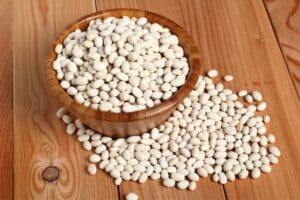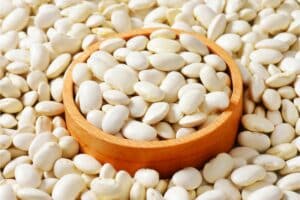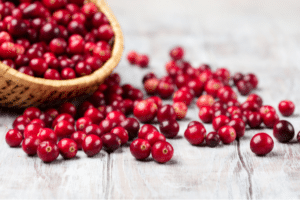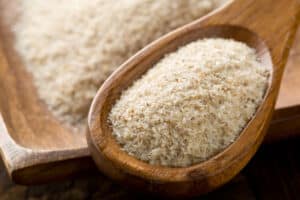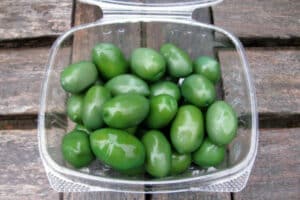Whole-grain mustard is just mustard that has been crushed to a paste but not so finely that the mustard seeds are completely broken down.
Contrary to other types of mustard, which are produced by delicately crushing the seeds to make a smooth paste, whole-grain mustard has seeds that are either whole or coarsely crushed.
This produces a flavor and texture that is exceptionally strong and pungent, which is simply unique. Or is it?
Not really — whole-grain mustard is not the only condiment with such a texture and flavor and can be substituted. In fact, the alternatives we’ll provide even have a comparable taste and texture profile.
So without any further ado, let’s check out stone-ground mustard, Bavarian sweet mustard, Creole mustard, yellow mustard, and Dijon mustard. At the end, there’s also a homemade whole-grain mustard recipe waiting for you.
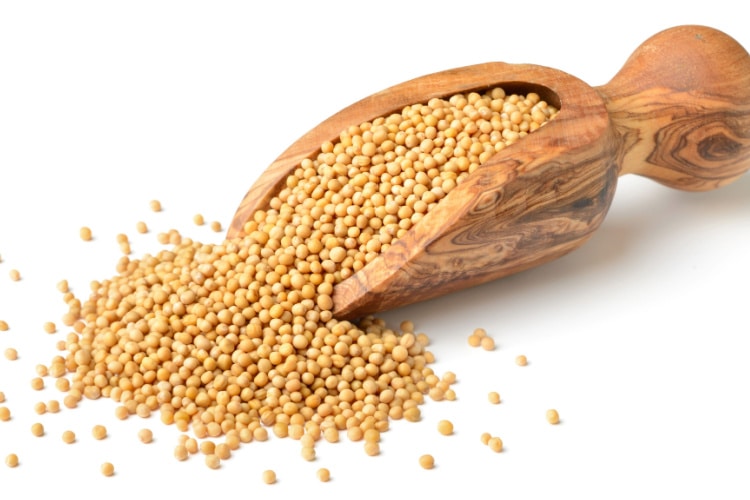
Whole Grain Mustard Substitutes: Cooking Ratio & Nutritional Profile
| One tsp of: | Calories | Fat | Carb | Protein | Fiber | Ratio |
| Stone-Ground Mustard | 5 | 0g | 0g | 0g | 0g | 1:1 |
| Bavarian Sweet Mustard | 10 | 0g | 2g | 0g | 0g | 1:1 |
| Creole Mustard | 5 | 0g | 0g | 0g | 0g | 1:1 |
| Yellow Mustard | 9 | 0.5g | 0.9g | 0g | 0g | 1:1 |
| Dijon Mustard | 15 | 0.9g | 1.1g | 0g | 0g | 1:1 |
What Does Whole Grain Mustard Taste Like?
Whole-grain mustard has a beautiful sharpness and earthy taste. Because the seeds are usually left whole, this mustard is milder than, for instance, a Dijon mustard.
Whole-grain mustard is the go-to condiment for cheese platters and charcuterie boards. It’s also a traditional component in dishes like German potato salad, a lovely side dish for ham and tuna sandwiches.
Whole Grain Mustard Nutritional Profile
One teaspoon of whole-grain mustard contains:
- 9 calories;
- 0.5g fat;
- 0.5g carbs;
- 0.3g fiber;
- 0.5g protein;
Whole Grain Mustard Substitutes
Stone Ground Mustard
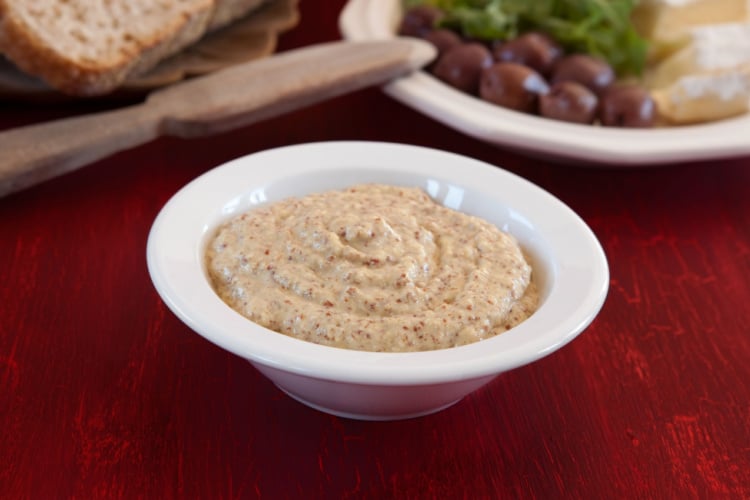
Stone-ground mustard is just slightly different from whole-grain mustard — the seeds are there, but they are crushed to provide a distinctive texture.
Stone-ground mustard may be served straight from a handy squeeze bottle. Inglehoffer is one such maker of stone-ground mustard sold in bottles.
However, compared to Dijon and other ground mustards, stone-ground mustard tends to have a mild tang. How so? The more ground the mustard seeds are, the stronger the flavor. In this case, the stone-ground sits between the finely ground and whole-grain varieties when it comes to tanginess.
Stone-ground mustard is ideal for a tangy dip, so feel free to dunk pretzels or french fries in this alternative. This alternative also fits potato dishes really well.
Bavarian Sweet Mustard
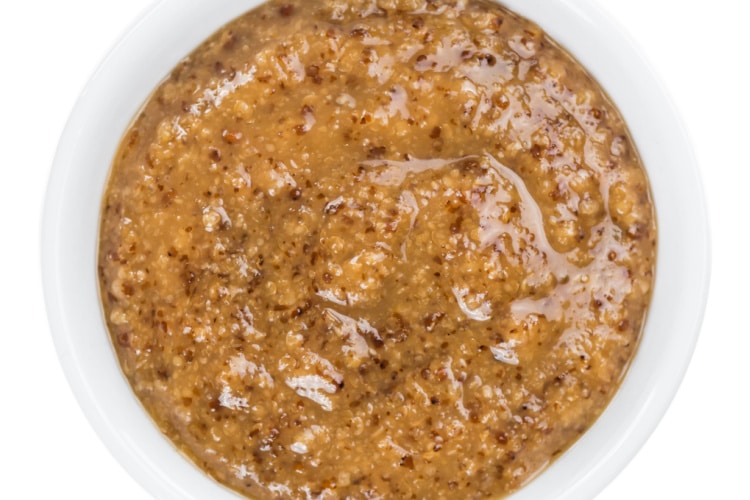
Do you feel like dipping a pretzel in some traditional German sweet mustard from Bavaria? Bavarian mustard is produced with roughly crushed mustard seeds with vinegar and a sweetener such as honey, applesauce, or sugar.
Händlmaier is the market leader in Bavarian sweet mustard. It pairs nicely with white sausages, Leberkase, and other Bavarian dishes. It’s also a nice addition to salad dressings.
Creole Mustard
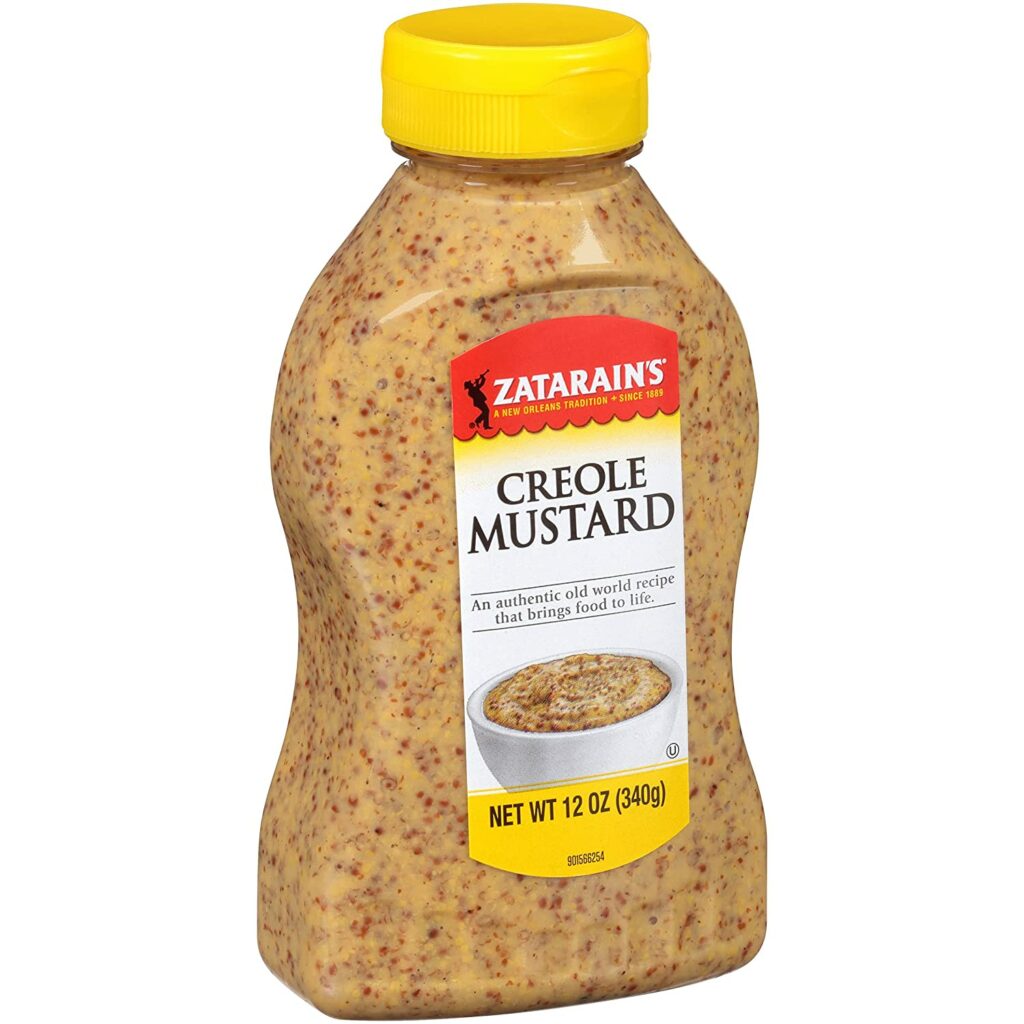
If you’ve ever cooked Creole and Cajun food à la New Orleans, then you must be familiar with the sweet, tangy, delicious mustard known as Creole mustard.
The main characteristic of Creole mustard is that it’s chunky and sweet while also being spicy. While its taste isn’t exactly similar to whole-grain mustard, its chunkiness may fit the bill for your dish.
The recipe for Creole mustard includes ingredients like brown mustard seeds, white wine vinegar, horseradish, brown sugar, and spices like paprika, garlic, and turmeric.
Creole is a common topping on po’boy sandwiches. It’s also a great condiment to use in dishes like jambalaya or in Creole and Cajun meat, as well as veggie sauces, dips, and dressings.
Yellow Mustard
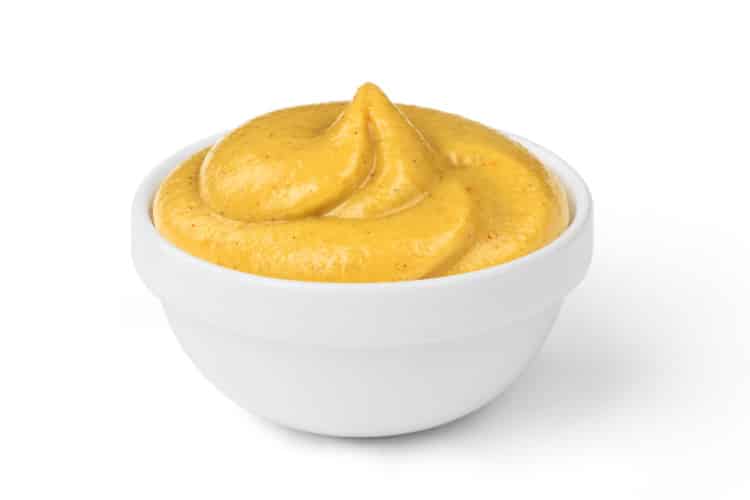
Without a doubt, yellow mustard is the kind that is most recognized around the world.
Its brilliant yellow hue is achieved with yellow mustard seeds and turmeric. These two ingredients are combined with water, vinegar, and mild spices to create a thick sauce.
Yellow mustard is an all-purpose alternative due to its mellowness. It can be squeezed on hamburgers and hot dogs or mixed in salad dressings, barbecue sauces, and meat marinades.
What makes it such a fantastic whole-grain mustard alternative is its mild flavor. Yellow mustard won’t overwhelm your dish with heat, but it will provide just enough flavor, similar to whole-grain mustard.
Yellow mustard is smooth, so if you’re not a fan of the whole-grain mustard texture, then this alternative might be just what you need.
Dijon Mustard
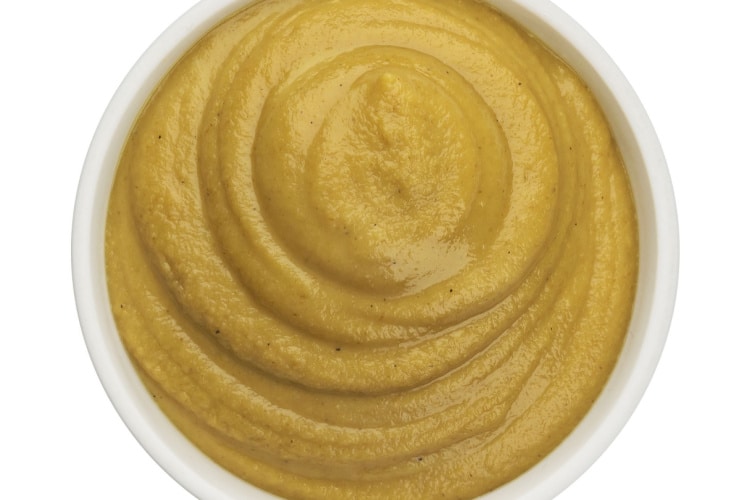
Dijon mustard is pungent mustard that originates from the French city of Dijon.
The traditional Dijon recipe calls for verjuice and brown mustard seeds (verjuice is an unripe grape juice with a strong acidic flavor). On the other hand, modern Dijon mustard uses white wine to achieve its characteristic taste.
Traditional Dijon mustard is beautifully smooth, in contrast to the chunky whole-grain mustard. Hence, if you want a deeper taste and a smoother consistency, you may swap whole-grain mustard for Dijon mustard.
Dijon mustard may be used in the same ways as whole-grain mustard. Due to its stronger flavor, it’s often used in marinades. Dijon mustard tastes heavenly on sandwiches. What’s more, it’s used in dressings to provide salads with an acidic tang.
Popular Recipes That Call For Whole-Grain Mustard
Whole-grain mustard can be used in a variety of recipes. For your inspiration, we decided to share some of the finest and tastiest ones.
Honey, Whole Grain Mustard, and Balsamic Sauce
If you don’t know what sauce to add to your burger or hot dog, we strongly recommend making this heavenly sauce. All you need is honey, whole-grain mustard, Dijon mustard, balsamic vinegar, salt, and pepper.
Plus, you can make a bigger batch and keep it in the refrigerator for future recipes that call for something as tasty as this sauce.
New York Chicken & Apple Salad
If you are looking for a salad recipe that takes no more than 30 minutes to make (dressing included), then this version of the traditional New York-style Waldorf salad might just be the right recipe for you.
The salad includes red apples, grapes, celery, onions, walnuts, dill, and chicken breasts. The dressing is a beautiful combo of yogurt, garlic, vinegar, whole-grain mustard, dill, salt, and black pepper.
Vegan Sausage Rolls
This next recipe is specifically for vegans! Preparing these vegan sausage rolls takes less than 30 minutes, and the list of ingredients is very simple.
All you need is vegan puff pastry, leek, olive oil, whole-grain mustard, sage, smoked paprika, breadcrumbs, sea salt, black pepper, and tamari. The recipe also includes apple sauce, which you can either buy from the store or make at home.
Honey Mustard Mash
Who doesn’t like mashed potatoes? Certainly not us! And to prove our admiration for this creamy dish, we decided to share a recipe that takes mashed potatoes to the next level. This recipe goes exceptionally well with sausages, and for that, we can thank the ingredient list — butter, double cream, cheddar, honey, and whole-grain mustard.
Homemade Whole Grain Mustard Recipe
While our five whole-grain mustard substitutes will offer your dish a comparable texture and flavor profile; our homemade recipe will give you an identical replica of whole-grain mustard (or an even better one). So let’s get cookin’!
Ingredients:
- ½ cup (115g) apple cider vinegar;
- ⅓ cup (58.3g) yellow mustard seeds;
- ⅓ cup (78.67g) pale ale;
- ¼ cup (44g) brown mustard seeds;
- 2 tbsp brown sugar;
- ½tsp sea salt;
- 1 tbsp honey;
Prep time: 5 minutes
To begin, combine brown and yellow mustard seeds in a small mixing basin and whisk.
Add the apple cider vinegar and pale ale, and let the mixture sit in a cool, dry place for 12 hours.
Once the seeds have fully absorbed the liquid, combine the honey, brown sugar, and sea salt, whisk and pour everything into a food processor.
To make a coarser mustard texture, pulse the ingredients five to six times. Keep an eye on the seeds to prevent them from getting too smooth.
And there you have it! Your very own whole-grain mustard. All that remains is to pour the mixture into a glass jar and let it sit for one to two days before your final degustation.
Conclusion
No matter whether we want things to be sweet, spicy, acidic, or bitter, whole-grain mustard can boost flavor, and it’s a must for many dishes.
However, as we saw, it’s not irreplaceable, and we can still use some other substitutes, which may unlock new flavor dimensions in your favorite dish.
For instance, stone ground mustard is similar to whole-grain in terms of texture, while Dijon mustard is significantly smoother and stronger in flavor.
But are you striving for excellence? If so, why not try making your own whole-grain mustard at home? It’s quite easy, as you can see from our recipe above. If you decide to make it, feel free to try it out in one of our tasty recipes!

